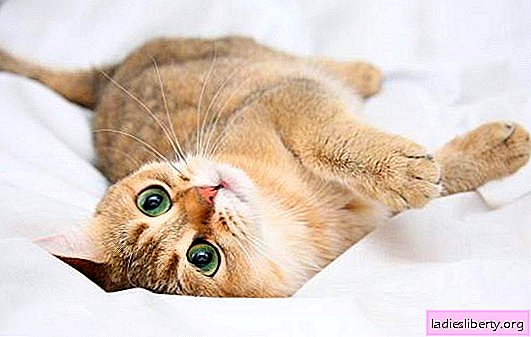
The behavior of cats during estrus can be a real test even for the most loving and tolerant owner. Veterinarians recommend sterilization before puberty. But if your pet has not gone through this procedure, it is useful for you to know about all the signs of estrus in cats, its stages and frequency. This is necessary for the safety of the animal, and to maintain your peace of mind.
Cat leak: how often does this happen
Most cats reach puberty between the ages of five and nine months, and sometimes even earlier. Unlike dogs, the feline cycle does not have a regular interval throughout the year. Cats' estrus depends on the season and is determined by a number of factors: for example, the length of daylight hours, time of year, the presence of other cats nearby, and even individual characteristics. When daylight hours increase to 10 and other conditions are optimal, the cat's hormonal system is activated and the reproductive cycle begins. The natural mating season lasts from March to September. During this time, the cat goes through all stages of the reproductive cycle, the most important stage in which conception is possible lasts 7 days, the rest from 1 to 21 days.
Cataract in cats: signs and symptoms
Even if you have never experienced a period of estrus in cats, you are likely to still understand what is happening with your pet. The behavior of a cat during this period, which is aimed at attracting the attention of a potential partner, will attract your attention. Signs of estrus in cats are often pronounced and include the following changes in behavior:
· The cat becomes hyper-tender, begins to actively rub against your legs, other animals, doors and furniture.
· When you stroke a cat, it can instinctively lower its head and raise its back and tail in preparation for mating.
· The pet becomes very vociferous. All your movements and cat's movements are accompanied by loud purring and meowing, up to the annoying loud screeches that we often hear outside the window from yard cats.
· The cat may begin to “tag” the area with a few drops of urine, trying to lure and attract the cat.
· Often there is a loss of appetite.
· The animal spends most of its time lying on the floor, moving back and forth, rolling from side to side, lifting the back of the body and tail, fingering with its hind legs, while purring loudly.
· You may notice abundant discharge from the genitals, sometimes bloody.
· The cat will try to escape from the house: start scratching the windows, cross the door and run out of it at the slightest opening.
· Earlier, a cute and affectionate kitty can become aggressive and moody.
Cats' estrus: stages
The reproductive feline cycle has four stages:
Anestrus
Inactive calm stage, lasts from late September to mid-January. Short light cold days are the main factor in suppressing the activity of the reproductive system. However, in cats that are constantly at home and most of the day exposed to artificial light sources, the duration of this stage may be reduced.
· Proestrus
At this stage, the ovaries become active, follicles form in them. This period lasts from 1 to 4 days. The production of hormones begins to increase. The cat shows increased appetite or loses it, becomes restless, increasingly purrs and rubs against the owner and furniture.
Estrus
The most important stage - it is during it that the cat can become pregnant. It usually lasts from 10 to 14 days. It is at the oestrus stage that the estrus becomes pronounced in cats. Signs are becoming more noticeable and reach their peak: the pet meows loudly, constantly lays on the floor, raises the back of the trunk and tail. Abundant discharge is noticeable. By all means, the cat tries to attract the cat.
· Metestrus
Stage of normalization. The cat returns to its usual behavior, hormones subside, and the opposite sex ceases to interest. This stage lasts 30-90 days, if the cat became pregnant - 2-3 weeks.
Cataract in cats: signs are severe, what should I do?
You already know what the signs of estrus are in cats and how that they disturb the pet. This is a really difficult period. Here are some tips to help calm your cat.
· Give your pet as much attention as possible. Iron it, be near. The cat will feel calmer and more confident.
· Play with your cat. This gives not only useful physical exercises, but also attention from you, as mentioned above.
· Provide the pet with a safe place - the cat does not have to worry about noise, children and other pets, she now has enough stress without it.
· Veterinary care. In cats, ovulation is induced by mechanical stimulation of the vagina during mating. A similar result can be achieved by a veterinary procedure. This will not stop your cat's current cycle, but it will delay the next.
· Use of medicines. In zoos, a huge selection of drugs to suppress ovulation and signs of estrus in cats. Most of them must be taken before the active phase within 7 days, or after the start of the active phase within 10 days. Such drugs are intended for short-term use. Prolonged use may adversely affect the health of the pet.
· Sterilize the cat. There is no better way to avoid unwanted pregnancy, hormonal changes and stress of your beloved pet. This is a great option for those who are not going to breed cats. In addition, sexually mature cats that do not mate with cats are prone to gynecological diseases. Consult with your veterinarian.
· If you do not mind the appearance of small kittens - you can bring your cat with a decent cat. But do not forget that pregnancy for a cat is even more stress than estrus.
First of all, the most effective way to easily overcome this difficult period is patience. This is a natural and painless process during which you need to be an attentive and understanding friend of your cat.











